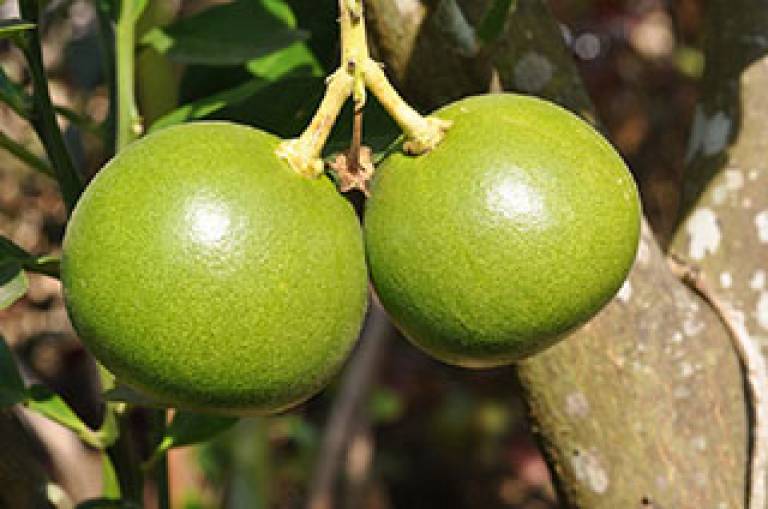Citrus fruit peel offers new evidence on early cultivation
15 February 2018
Citrus fruit was being cultivated in India in the Late Neolithic period and in southern Thailand in the Iron Age, according to new findings by researchers at the UCL Institute of Archaeology and Peking University, Beijing.

Citrus fruit are widespread and well known nearly everywhere today, but very little is known about how they were domesticated and diversified.
Researchers now believe that a new approach involving the analysis of charred citrus fruit peel or 'charred rind' will offer a new window into understanding the origins of citrus fruit cultivation.
Archaeologists came across these discoveries by chance when
analysing soil samples from India (c.1400 to 100 BC) and southern Thailand (c.
400 - 1BC), as art of a research project on agriculture and rice cultivation.
According to Dorian Fuller (PI):
- "Primarily we looked at soil samples to understand agriculture and rice cultivation as it is a staple food, but people didn't just eat rice. We floated thousands of litres of soil to find remains of charred rind, and the significance is that we now have hard empirical evidence for citrus fruit being used in prehistory. Through archaeobotany we can fix a time and place to when citrus fruit was domesticated. The earliest cultivated citrus trees that have been identified sit along the Indian peninsula, far away from the Himalayas where wild citrus fruit originated."
Research on domestication was funded by a European Research Council Advanced Investigator grant on 'Comparative Pathways to Agriculture'. Archaeobotanical sampling and laboratory work on samples from Thailand and India were carried out as part of the Early Rice Project supported by grants from the Natural Environment Research Council.
Read more
Image credit: Pummelo (Sierra Sunrise)
 Close
Close

